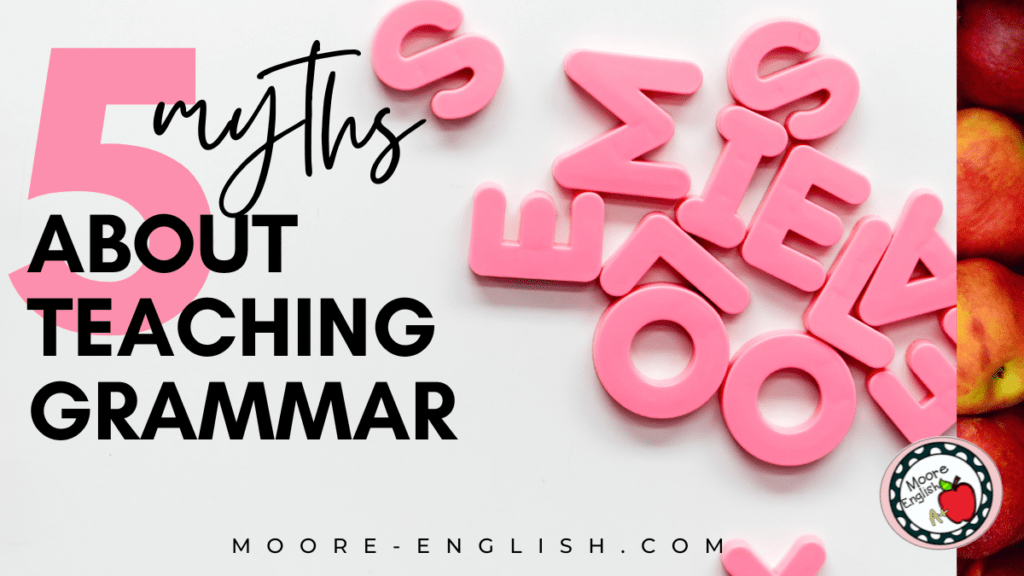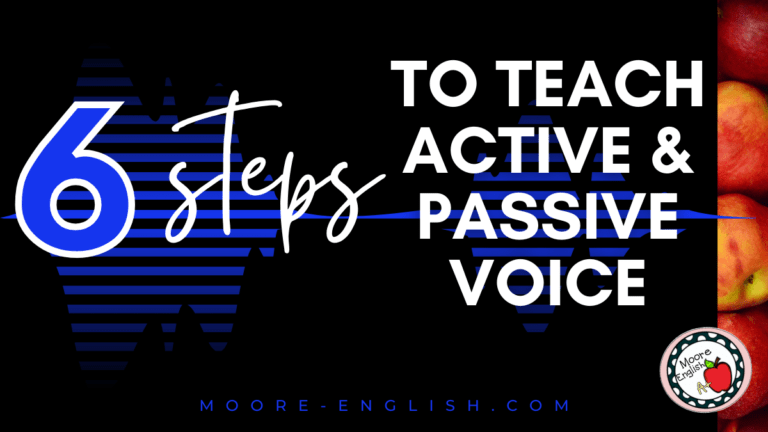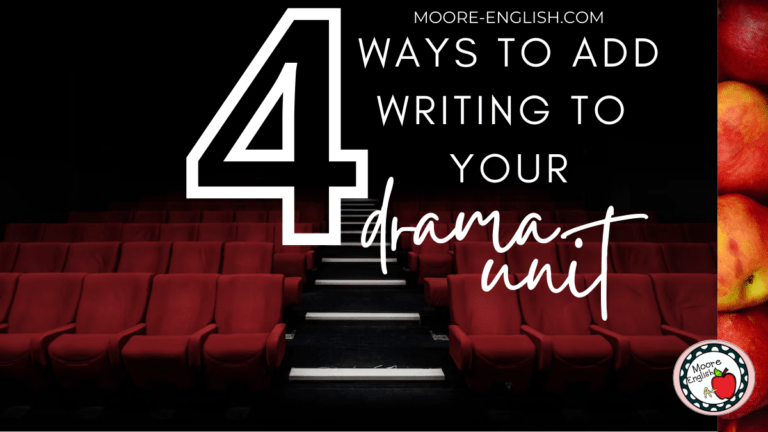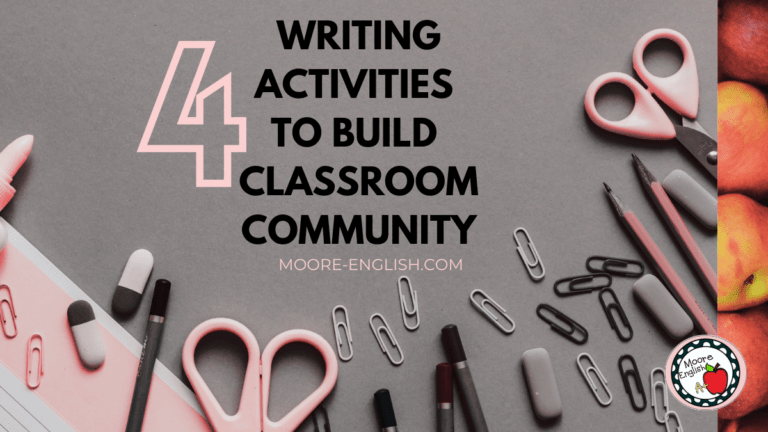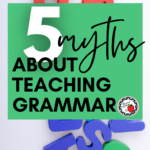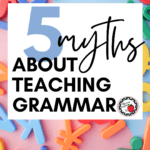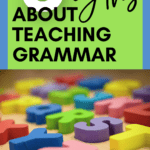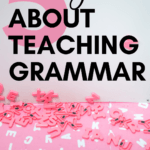In third grade, Mrs. Dennis introduced a grammar workbook. I told my mom that “grammar sucks.”
She grounded me.
Needless to say, I never expected that I would like teaching grammar. More importantly, my students believe that I live for grammar lessons. They think “grammar” is my entire personality, and that’s okay. When they see my enthusiasm, they are automatically more engaged.
And that’s the first myth of teaching grammar: grammar does not have to be your entire personality. However, your students should believe you have a mad passion for correcting comma splices. In my experience, when I surrender enthusiasm, I lay down my best tool against apathy.
This post this post may contain affiliate links. Please read the Terms of Use.
Myth #2: There is a sacred order
There are plenty of blog posts explaining the best order in which to offer grammar instruction. “Start with parts of speech” or “Begin with fragments and run-ons.” I’m sure that, at one time or another, I’ve said both of those things.
In reality, there is no perfect place to begin. Instead, try a grammar pre-assessment (like this free one) and get a student writing sample. As you analyze and reflect on this data, patterns will emerge. For example, if students aren’t struggling with agreement, then there may not be a reason to review parts of speech.
Additionally, talk to your team. What grammar skills are you expected to cover? Are there any common assessments where students will need to apply a specific skill? For example, our sophomore curriculum expects students to tackle active and passive voice.
Myth #3: Grammar is irrelevant
Several years ago, I had a student writing about To Kill a Mockingbird. He was trying to quote Heck Tate, whom he had described as the local “sharif.” When I encouraged the student to review his work, he protested, noting that spell check was not making any suggestions. While I do not want to discourage students from using tech to work smarter, this is a pretty good illustration of why grammar matters.
In a similar vein, my father worked for years as a shop foreman for a steel fabrication shop. He was often in charge of hiring new welders. He often tells stories about the resumes he would receive where names were misspelled or phrases were unreadable. Even in fields where writing is not the primary focus, grammar matters.
Furthermore, language is a powerful tool for social justice. Maintaining standard English grammar can be a tool of white supremacy, but learning about rhetorical strategies and structures helps students acquire the tools to persuade. Similarly, discussing the importance of honoring pronouns and capitalizing “Black” are conversations couched in grammar. Understanding grammar helps students “see” how language can be used to maintain or to work against oppression.
Myth #4: Teaching grammar is boring
While teaching grammar may not be your favorite part of the day, it certainly doesn’t have to be boring! Here are some fun, creative ways to spice up your grammar instruction:
- Try an escape room
- Introduce inquiry-based learning
- Implement task cards and gamification
- Check out my favorite Ted-ed Grammar Videos
Additionally, teaching grammar seems boring when instruction doesn’t feel meaningful. For this reason, it’s important to help students think about their growth and goals. These data sheets are a quick, easy way to help students keep track of their progress all year long! Visualizing growth is a perfect way to help students see the value of grammar instruction.
Myth #5: ________ is bad
We see blanket statements like this all of the time in education. When it comes to teaching grammar, activities like diagramming sentences and using worksheets are often labeled as “bad.”
No instructional strategy is ever 100% good or 100% bad. At the end of the day, an instructional strategy is simply a tool. It’s about how you use the tool that matters. Guess what? I have used both sentence diagrams and worksheets.
Make worksheets memorable by complementing them with a variety of strategies. Check out these strategies to spice up a dull worksheet:
- Use a worksheet during station rotations
- Gamify the worksheet by turning into a competition
- Incorporate a worksheet into a larger activity like an escape room
- Ask students to move from partner to partner to complete the worksheet
- Divide the worksheet into I DO-WE DO-YOU TWO DO-YOU DO or other methods of gradual release
- Hang chart paper related to each question and ask students to move from paper to paper justifying their answers

